Instructional Series
This site will be closing soon as its content has moved to Tāhūrangi.
2024 titles are available on Tāhūrangi. Use the filters to find specific series.
Find Literacy resources at Tāhūrangi - Literacy.
Welcome to the English medium literacy instructional series teaching and learning resources for years 1 to 8.
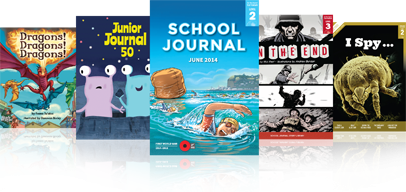
- Gold
- Blue
- Green
- Orange
- Red
- Turquoise
- Yellow
- 4
- 2
- 3
- 1
- 4
- 8
- 6
- 7
- 5
- 3
- 2
- 1
- Social Sciences
- English
- Health and Physical Education
- Science
- Technology
- The Arts
- Learning Languages
- Mathematics and Statistics
- Non-fiction
- Fiction
- None
- Living world
- Nature of science
- Articles
- Stories
- Poems
- Plays
Search results
117 items - Showing 41 - 50
-
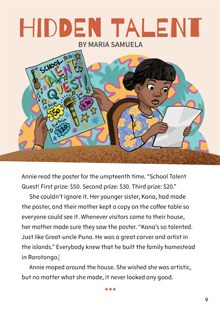
Hidden Talent
by Maria Samuela
Annie is feeling envious of her siblings – they each have a special talent. (Kana is artistic, Juanita can sing, and rugby-playing Jackson has been made props manager for the upcoming talent quest.) The family says their talents must be inherited from their ancestors. Annie doesn’t think she has any special talents. However, on the night of the talent quest, disaster looms when the power supply goes out.
-

Captain Cook Charting Our Islands
This article describes Captain Cook’s first visit to New Zealand where he charted the coastline. It focuses on Cook’s abilities as a skilled maker of charts and maps rather than as a great explorer. It also examines the maths involved in Cook’s chart making (a perfect, real-life example of maths in everyday life).
-
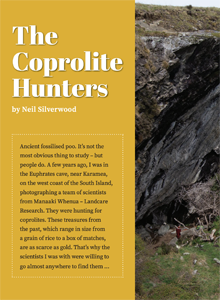
The Coprolite Hunters
by Neil Silverwood
Photographer Neil Silverwood has documented the work of New Zealand scientists before. This time, they’re hunting for coprolites – fossilised animal faeces. Analysing this “treasure from the past” allows scientists to learn more about our endangered native bird species, including the kinds of habitats that once supported them. This is another useful article about the work scientists do and the many ways in which they continue to learn about our world.
-
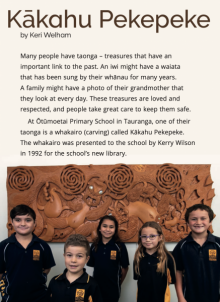
Kākahu Pekepeke
written by Keri Welham
This report describes taonga at Ōtūmoetai School, focusing on a very special whakairo (carving). It explains why the whakairo is a taonga to the school and the wider community. As well as speaking directly to Māori students, this story provides opportunities for all students to make connections to their own understandings about taonga, the arts, and cultural practices.
-
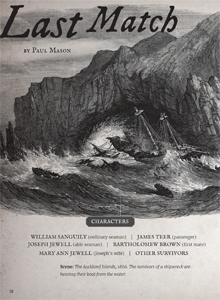
Last Match
by Paul Mason, illustrations by Alex Cara
In 1866, the General Grant was sailing from Australia to London when it was shipwrecked on the one of the Subantarctic Islands. Of the eighty-three people on board, only fifteen made it ashore. A survivor later wrote about how the castaways only had six matches, with five "squandered". The lighting of the last match was a critical moment in their survival.
-
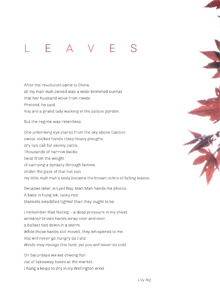
Leaves
by Lily Ng
This poem explores the relationship between the poet and her grandmother who was a refugee from China following the Cultural Revolution.
-
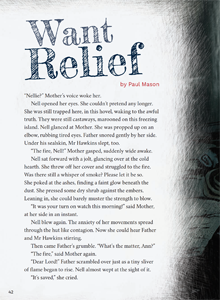
Want Relief
by Paul Mason, illustrations by Andrew Burdan
The Auckland Islands, a New Zealand territory in the Southern Ocean, were the site of nine shipwrecks in the nineteenth century. Paul Mason uses this as a starting point for his fictional story about Nell, who becomes a castaway with several others and must play her part in keeping their precious fire going.
-
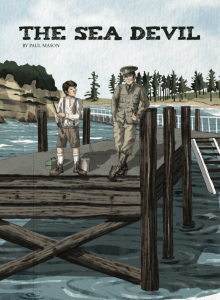
The Sea Devil
by Paul Mason
illustrated by Kimberly Andrews
"Just beyond the long arm of the wharf, the camp’s launch, Pearl, tugged at its mooring. The thought of a big fish jagging on his line quickened James’s pace, and it wasn’t until he was on the wharf that he saw he was not alone. A dark figure leant against one of the piles – it was one of the Germans, staring at the boat."
-
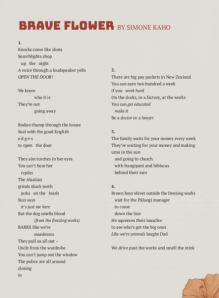
Brave Flower
by Simone Kaho
illustrated by Leilani Isara
The poem “Brave Flower” vividly captures the experience of those who were subjected to the dawn raids that took place in Aotearoa in the 1970's.
-
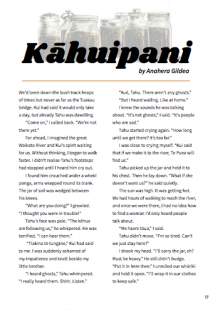
Kāhuipani
by Anahera Gildea
illustrated by Andrew Burdan
Based on a true story, Kāhuipani details the journey of two children to the Tuakau bridge to find Te Puea, a young woman who cared for more than 100 orphans during the influenza epidemic of 1918.



 Literacy Online home
Literacy Online home
